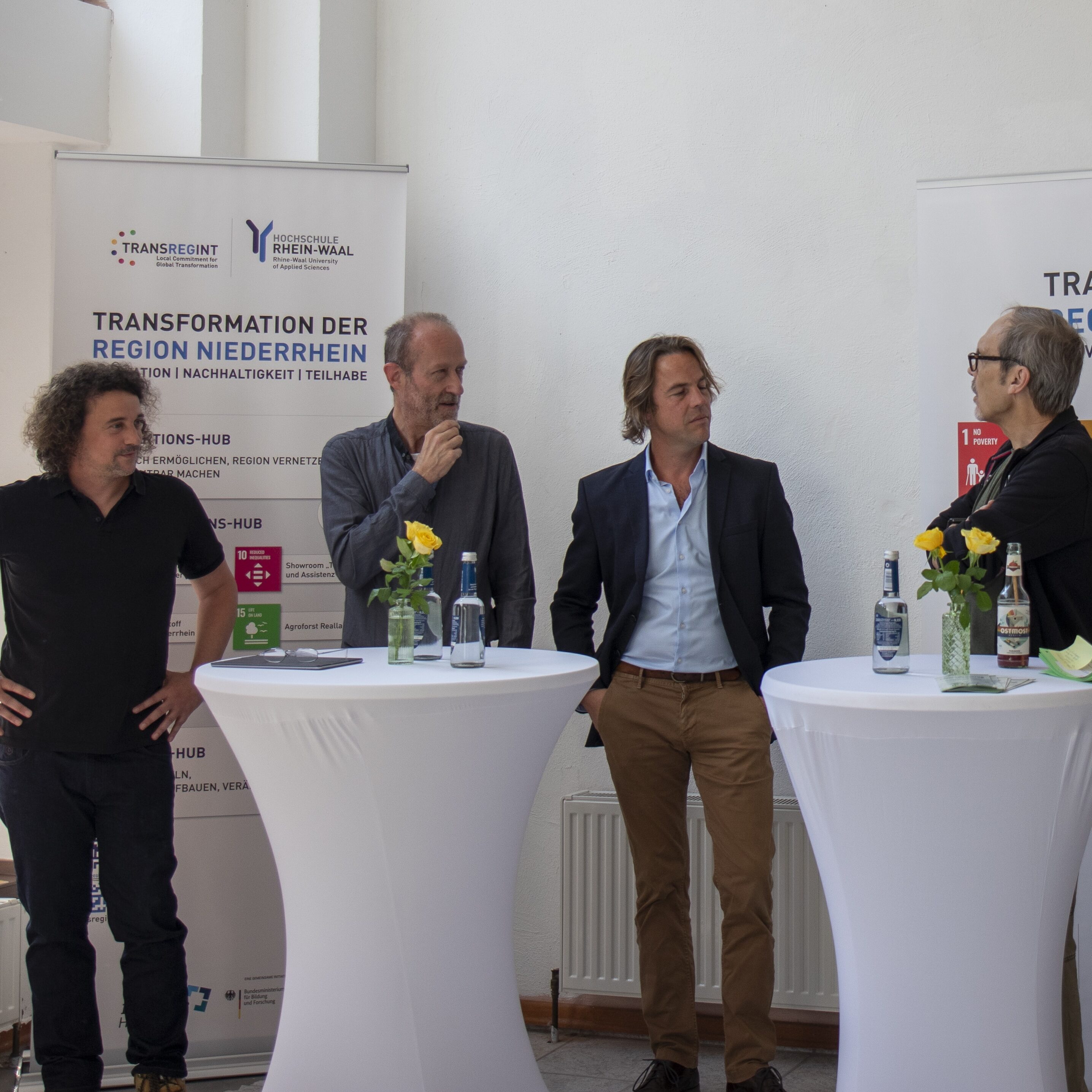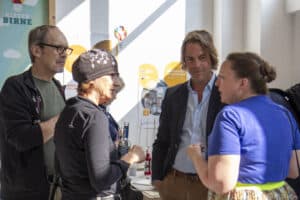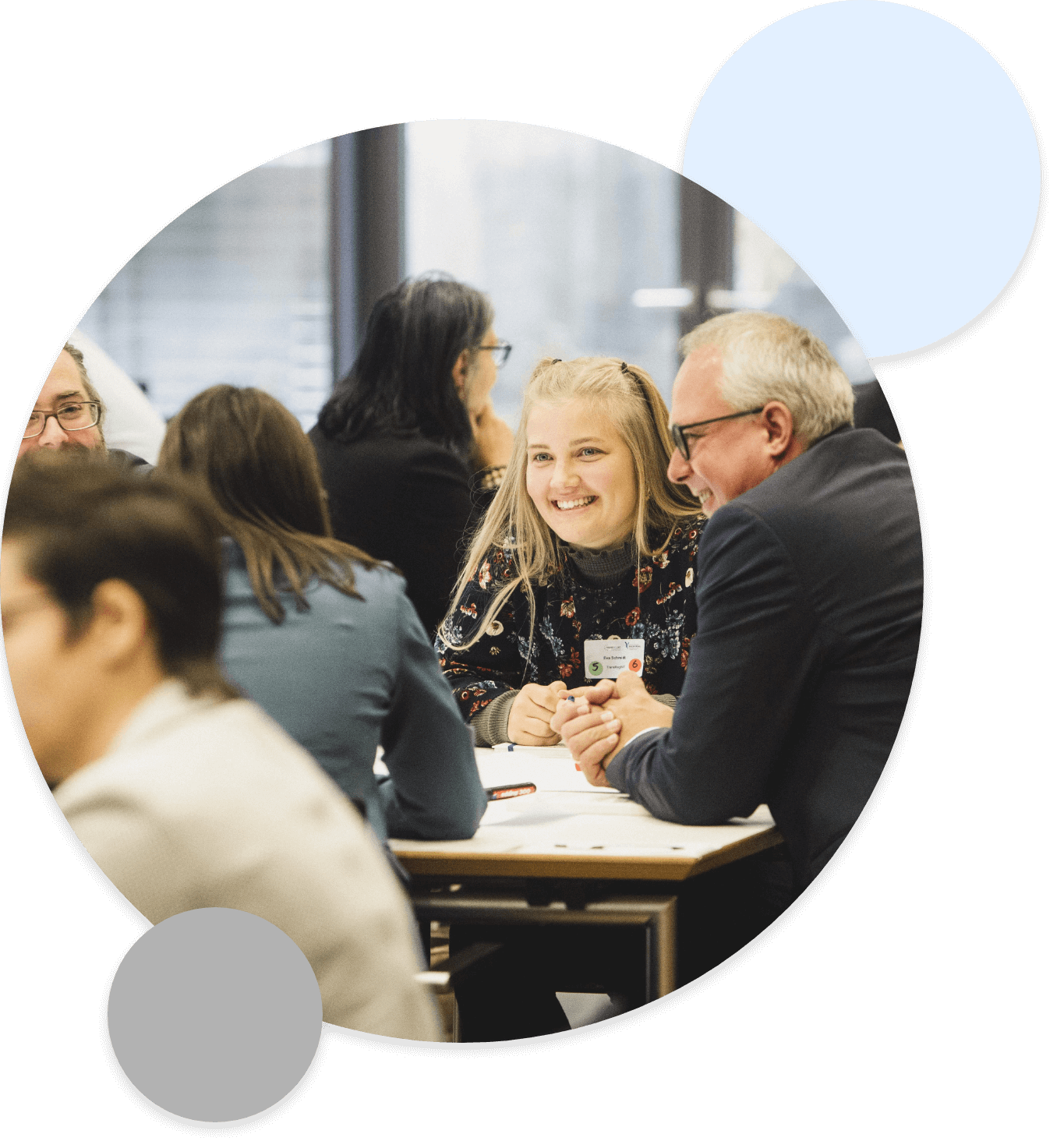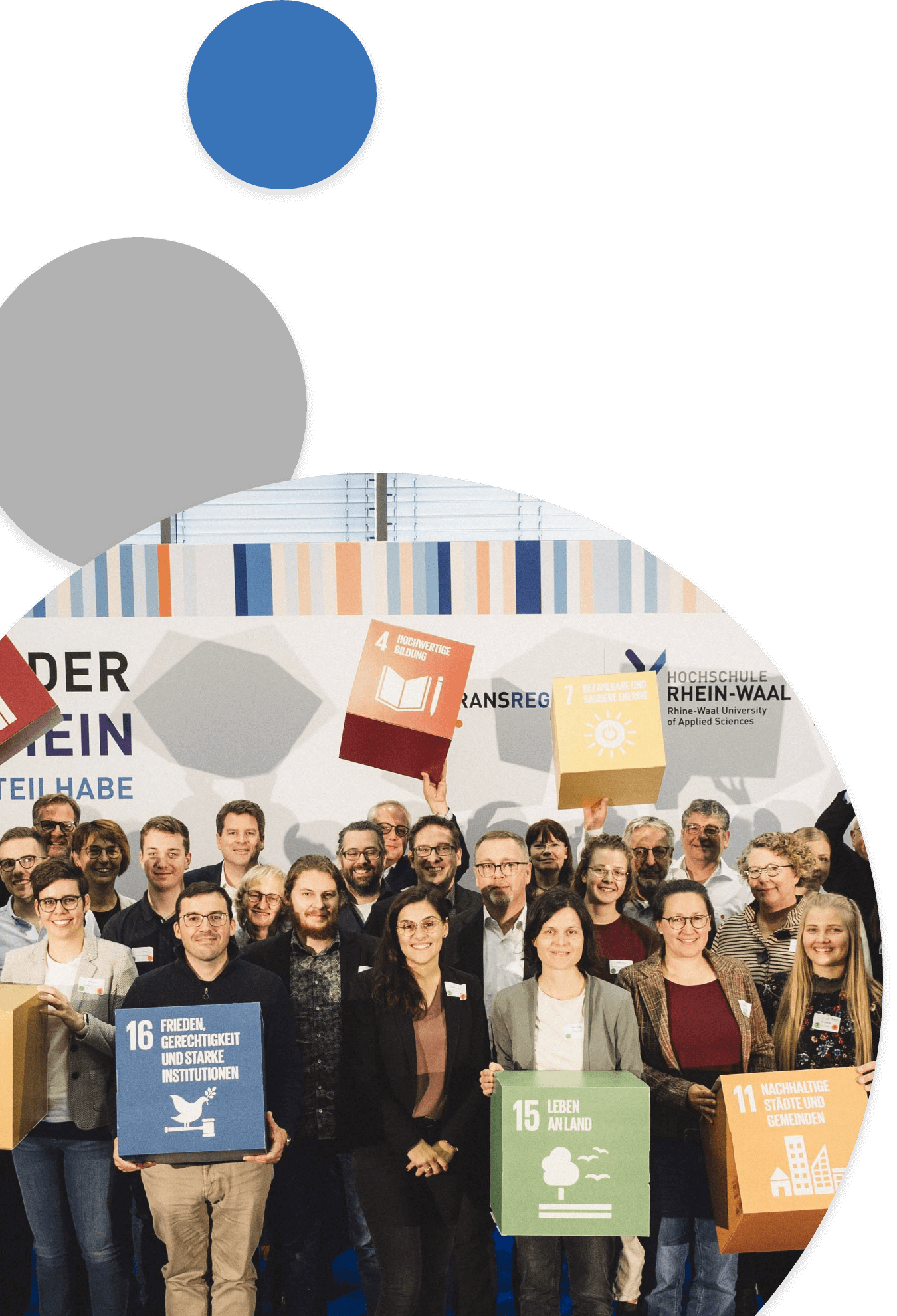
Joint discourse for a green Kleve
With great anticipation for the Landesgartenschau (LAGA), which is coming to Kleve in 2029, the panel discussion at DialogPunkt Kleve focused on the question: ‘How can the city of Kleve become greener?’. The event brought together a diverse group of experts and committed citizens to discuss the current and future challenges and opportunities of urban greening in Kleve.
Moderator Florian Gaisrucker, Innovation Manager Society, opened the evening and introduced the five experts:
- Dirk Posdena, Head of the Climate Protection, Environment and Sustainability Department of the City of Kleve
- Klaus Peters from Stauden Peters
- Christopher Henrichs from Permakultur Verein Niederrhein
- Jürgen Ramisch und Barbara Pauls from Essbares Kleverland e.V.
Urban greening as an opportunity and a challenge
Klaus Peters from Stauden Peters shared his experiences of urban greening in Kleve’s neighbouring municipality of Kranenburg and emphasised the importance of ground-covering grasses and perennials. He is already working with the town of Kleve to test native plants in various locations such as Kleve’s theater, in front of the town hall and at roundabouts. Peters is already looking forward to LAGA 2029 and states: ‘If you get it right, you won’t recognise Kleve. Close cooperation and involvement of everyone involved is important.”
Christopher Henrichs from Permakultur Verein Niederrhein emphasised the importance of green corridors for biodiversity. “The Landesgartenshow should extend from Kermisdahl to the university and create something lasting. We plan for the long term rather than the short term, optimise rather than maximise and focus on diversity and cooperation rather than simplicity and opposition,’ said Henrichs.

Essbares Kleverland: Community gardens and education
Jürgen Ramisch and Barbara Pauls from the Essbares Kleverland e.V. association spoke about the importance of community gardens. The focus is on communal interaction in the garden, where everyone can participate and benefit. The two gardens on the banks of the Spoy promote an awareness of sustainability and are an important part of the urban greenery that benefits people and animals. Due to their location on the Opschlag, they are often approached during their maintenance work and thus have the opportunity to educate people about their work and raise awareness of sustainability.
Involve and motivate citizens
A central topic of the discussion was the involvement of citizens in urban greening. The aim of the city of Kleve is to protect citizens from the consequences of climate change and to double the amount of greenery in the city. Dirk Posdena emphasised that new incentives have been created to encourage the population to actively participate. “We have to break new ground, which is why we are focussing on cooperation with practitioners and science. If you want to get citizens on board, it can’t happen overnight. But we are on the right track. What is possible today was unthinkable 10 years ago. Sustainable change takes time,’ explained Posdena.
Conclusion and outlook
The panel discussion clearly showed that LAGA 2029 offers a great opportunity to make Kleve greener and more attractive in the long term. All participants agreed that sustainable changes require time and the active participation of citizens. ‘Every square centimetre of meaningful greening brings diversity,’ Barbara Pauls summed it up.
The event provided a great opportunity to learn about the many aspects of urban greening and actively participate in the dialogue. The event showed how urban greening can strengthen not only the environment, but also our health and community. The evening at DialogPunkt Kleve was therefore a further step in advancing the plans for urban greening.
You can find more information about the events at DialogPunkt Kleve here!




Kommentare